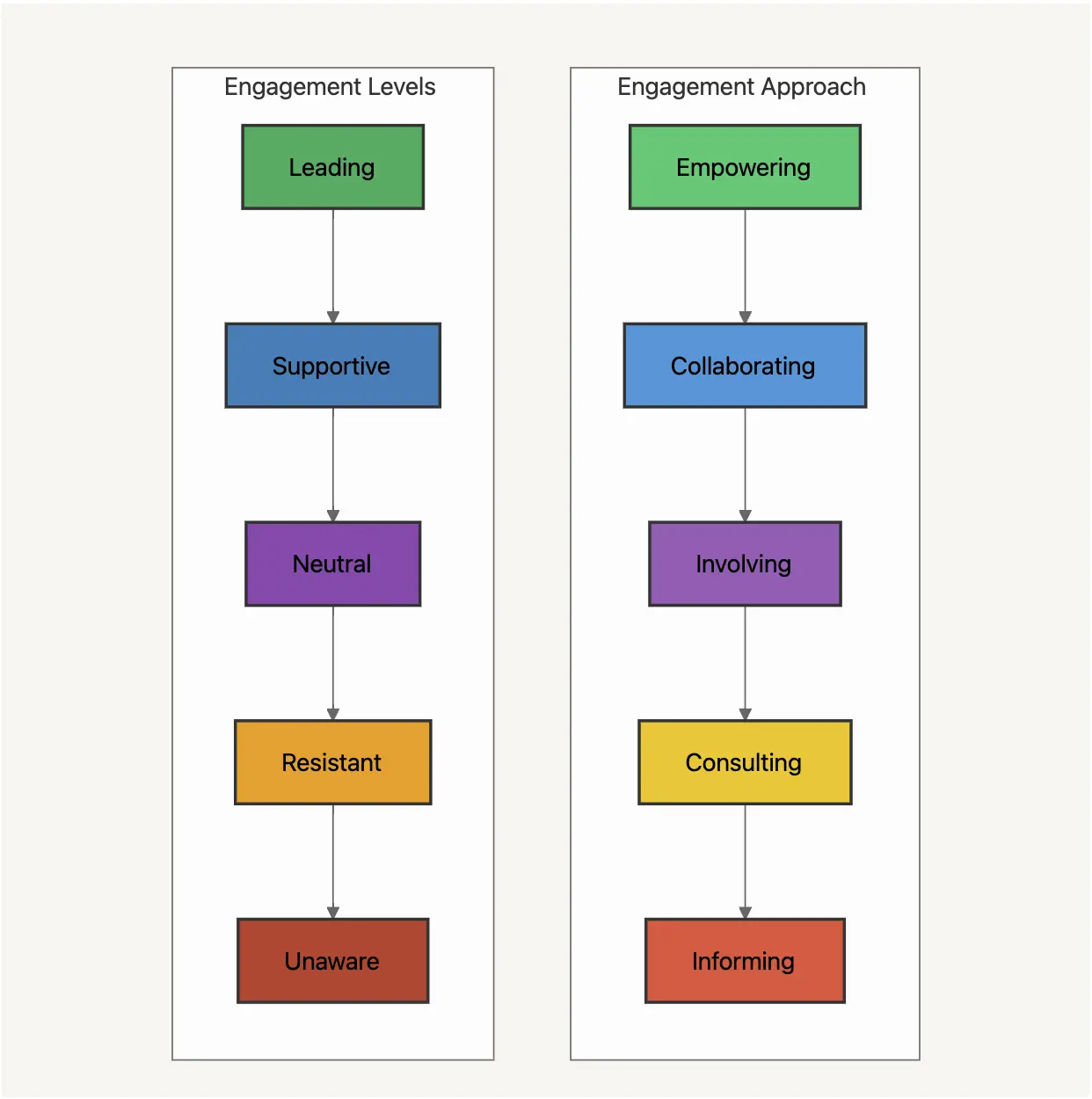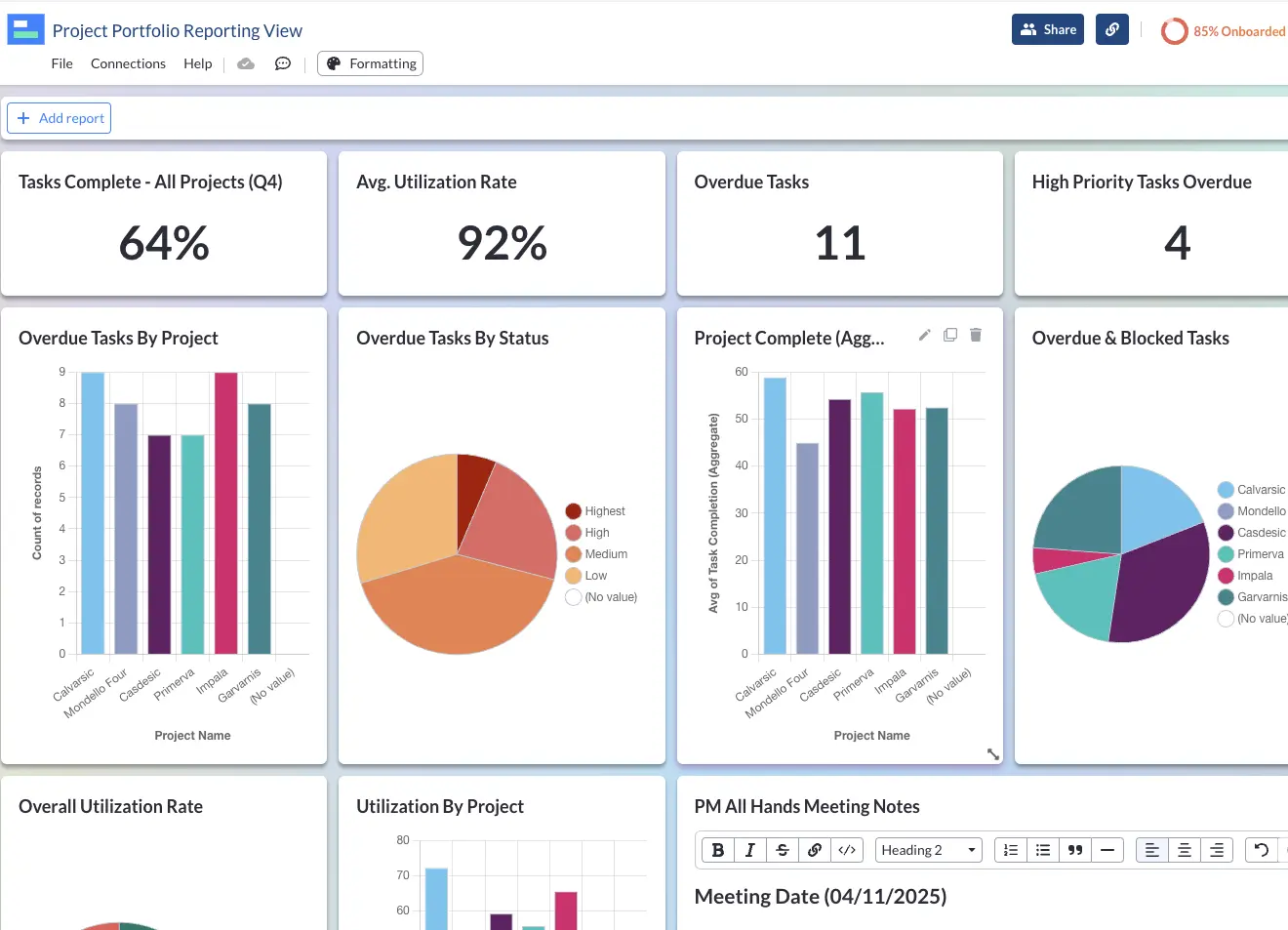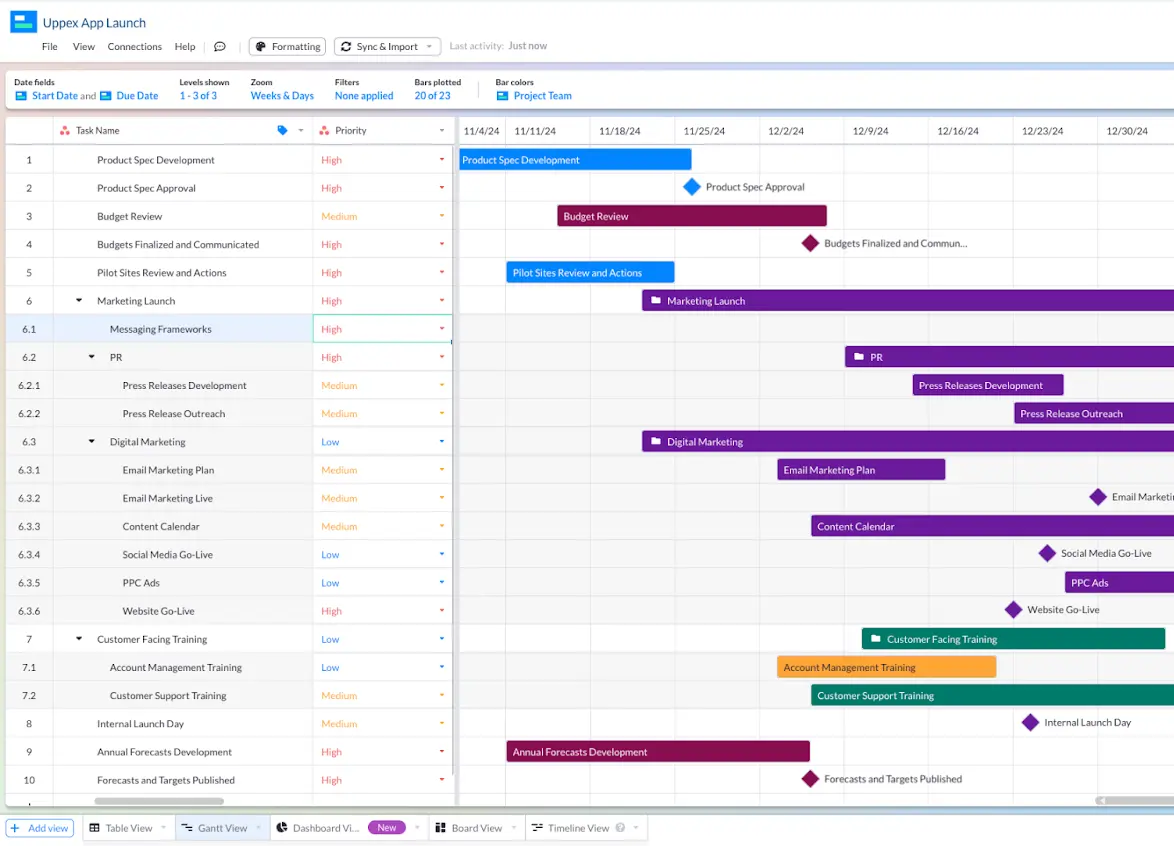
4 High-Level Stakeholder Engagement Strategies for Tactical Projects
Stakeholder engagement strategies are crucial to an effective project.
But you already knew that.
This article isn’t going to walk you through bland steps to achieve stakeholder engagement. You’re not a project management novice. You’re already defining your objectives and building stakeholder matrices. You know what you’re doing.
Instead, we’re presenting four different approaches to prioritization and communication that will customize your strategy to different scenarios.
This is a high-level, tactical guide to help level up your stakeholder engagement strategy across the board.
Give your stakeholders more visibility, fast, even if they don’t use Jira. Try Visor for free.
To use these tactics, you’ll still work with all the typical agile stakeholder engagement tools, such as surveying stakeholders and arranging check-ins. These are simply ways of approaching that work so your engagement strategies hit with the maximum possible impact.
Levels Of Stakeholder Engagement
You can categorize stakeholders into five buckets based on their level of engagement in a project:
- Unaware: Stakeholders have no awareness of the project and the possible impacts it may have on them
- Resistant: Stakeholders are aware of the project and are resistant to it and/or the change it will bring
- Neutral: Stakeholders are aware of the project, but have a neutral response to it (neither resistant nor supportive)
- Supportive: Stakeholders are aware of the project, and are supportive of it and/or the possible impacts of it.
- Leading: Stakeholders are aware of the project and are involved in ensuring it is successful.
You can use this categorization to improve how you track stakeholder engagement and strategize ways to manage and improve engagement.

Below I explore how you can build upon this simple categorization and develop actionable strategies to improve stakeholder engagement.
Start with Priority
In this agile stakeholder engagement methodology, you want to rank your stakeholder by priority.
Lay out all the elements within the scope of your project. Note every potential stakeholder. Then rank them in order of priority, with the most critical sign-off at the very top. This person (or the top few people, in some cases) become your top priority stakeholders.
Remember that the most critical person may be someone different at different stages, so make sure to note that and be ready to pivot as needed.
Put the most care into communication with your top priority people, and go out of your way to make sure they’re informed as needed. You might even want to structure your communication style to cater to them, if it doesn’t risk losing other stakeholders entirely.
This is an approach you’re probably more used to, as it feels intuitive. You may have been approaching stakeholder engagement using this tactic without thinking about it! Traditional stakeholder mapping works beautifully here. Noting who is the most interested in your project can inform a lot about priority ranking.
Start with Availability
This is an approach that ranks stakeholders (and metes out involvement) by availability rather than pure priority.
In this methodology, you’ll still work through the typical stakeholder surveys and setting up communications. But in this strategy, your top priority people are actually whoever will be the most engaged with the project, regardless of their personal importance.
This stakeholder engagement strategy works great when all of your stakeholders are roughly the same in seniority or have similar ability to sign off on a project. This strategy also works very well if the most critical person isn’t as available as you’d like, but several other people are, and have a combined weight (of rank or experience) that can tip the scale for your project even without the most critical person.
As opposed to following a priority ranking, this methodology is much more realistic for working with stakeholders who are already less engaged than you’d prefer. It’s a very real-world approach: sometimes, the people you need to engage the most have the least amount of time for you. This creates bottlenecks in your process, and can lead to a lot of frustration for everyone.
Availability ranked stakeholder engagement is not always going to work, even if it may feel like a better fit for your situation. Sometimes, the person bottlenecking your process must be involved, perhaps because of specialization or sign-off requirements, and there is no option for a workaround.
In these cases, it might still be worth floating the idea, even if you can’t count on adoption. Try bringing it up in the frame of a just-in-case scenario: “If you’re not available and we’re on a limited deadline, what should the next tier of approval look like?” This may help with overall buy-in on the idea.
Continuing Engagement
You’ve figured out where to begin. Now how are you strategically keeping up stakeholder interest and engagement? There’s two ways to approach this tactically, being active and being reactive.
Whichever methodology works better for you, you’ll want to custom-tailor reporting to match the approach. Active engagement of stakeholders demands more ongoing, clear visibility into projects and timelines, while reactive engagement depends on pin-point accurate details provided as-needed.
No matter which style you choose, Visor can be a big help by enabling you to build views just for your stakeholders, which they can access at any time without ever needing to touch your more granular task charts. Even if your stakeholders don’t use Jira, you’ll be able to send them detailed, colorful reports that include all of the information you keep in Jira. And because of our two-way syncing, you can set the report up once and keep it up to date forever.
Be Active
Much like priority-focused stakeholder ranking, you may already be using this method without thinking about it. It’s a very intuitive methodology, especially for project managers who are fairly extroverted or people-oriented themselves.
In an active stakeholder engagement strategy, you certainly make use of regularly scheduled meetings or check-ins. But you also make it a point to reach out ahead of issues and to proactively seek out feedback and involvement. You update on small things rather than saving information for large presentations or reports.
The beauty of this method is that, done right, it can be very helpful in building up positive relationships between team members and stakeholders. Check-ins can be very casual, sometimes as simple as dropping a quick line on Slack or grabbing coffee and chatting while you sip. This method can also reduce meetings and stress by offering micro-updates instead of large scale status reports.
Active stakeholder engagement is the perfect fit for many teams, but relies heavily on the social element being present and pleasant for everyone. It won’t work on teams with extremely narrow bandwidth or tight standards on communication formality.
Be Reactive
While this may be something you’re already doing, odds are it’s not a tactic most people use on purpose. Reactive engagement is stakeholder-led: you may sometimes reach out if it’s needed, but for the most part you let the stakeholders come to you, or you leave all updates to regularly scheduled meetings.
You’ll want to set up a series of milestone checkpoints, where you’ll prepare a templatized update for your stakeholders. You may send a regular email update as well to passively fill them in. And you’ll notify them when you need sign-off or input. Otherwise, you have an open door for stakeholders to approach you with questions or concerns, but you won’t initiate other contact.
When done with intention, this method can be very powerful, freeing up time and reducing unnecessary communication. While you might lapse into reactive engagement due to bandwidth constraints or frustration from stakeholder rejection, that’s not taking an intentional tactic, and is likely to produce less-than-optimal results.
The key difference is in expectation setting. With a true reactive stakeholder engagement strategy, you notify your stakeholders up front that this is the methodology you’ll be using. Make sure they understand what this means, and let them know that the burden of outreach outside of the planned tough points is on them.
Tactical Stakeholder Engagement Can Work for You
Engaged stakeholders truly make all the difference in a project, widening bottlenecks and clearing up blockers in a way that nothing else can.
When you think tactically about how to approach stakeholder engagement, you develop a sense for finding the right approach for any situation and any person, making your stakeholders more engaged across the board.
A critical part of stakeholder engagement is creating engaging visualizations, which also leverage color communication and color theory, that you can share with project stakeholders, showing them the ideal level of information for their interest and engagement levels.
A Project Portfolio Stakeholder Dashboard in Visor (using Jira and Asana data):

In Visor you can create crystal clear visualizations of your project data (or data from entire portfolios of projects), that you enter directly into Visor, or that populates via a two-way integration with apps like Jira and Asana.
A Stakeholder Friendly Roadmap Of An App Launch in Visor (using Asana data):

Visor visualizations get and keep your stakeholders engaged. We also offer many different templates, ranging from simple Gantt charts to more complex project portfolio management templates.





